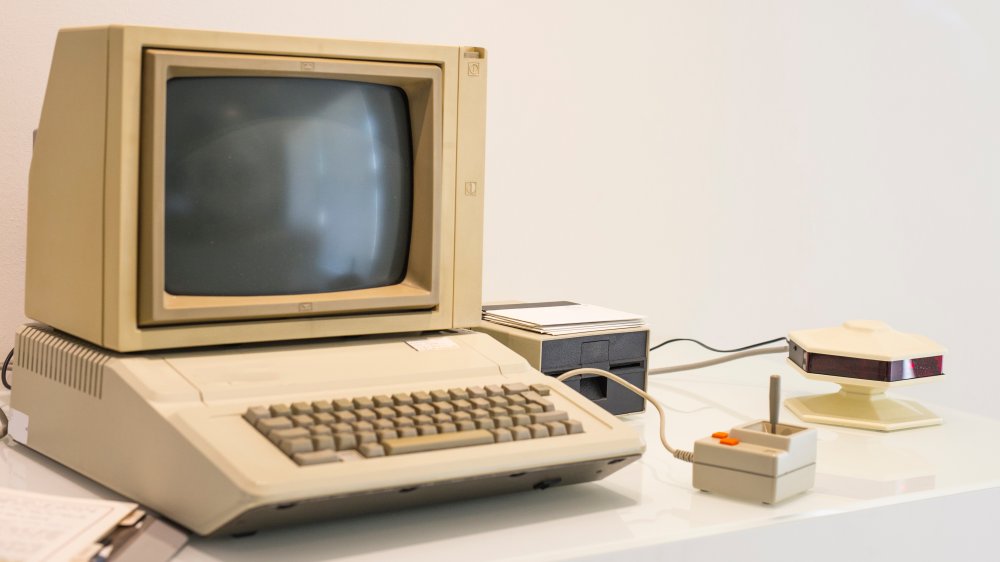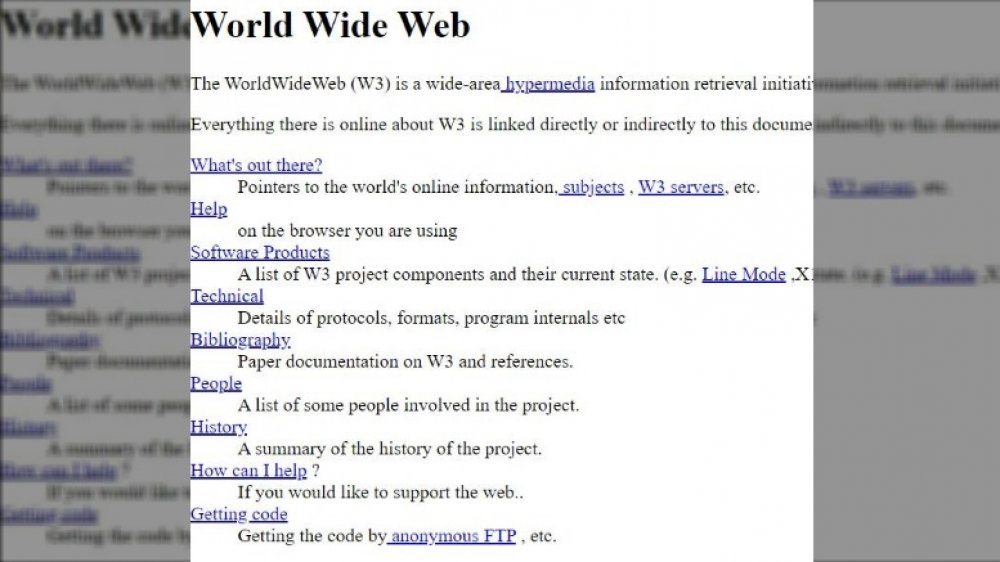What Was The World's First Website?
These days, the internet is a big, scary place, and it's been around for so long that multiple generations have never known a world without it. Decades of cyberspace have become a part of history, from antiquated internet message boards to the oldest memes, and back when it all first launched, there's probably nobody on Earth that could've anticipated the devastating impact of social media ... well, except for the sci-fi authors who did predict the whole shebang, but hey.
How did it all start, though? Thankfully, while the first website on Earth wasn't anything too pretty, it also wasn't the sparkly HTML-ridden mess that would overrun everybody's screens by the mid-nineties.
The first website wasn't the flashiest place around, that's for sure
Gaze out in awe, folks. Right there, in the image displayed, is the glorious reality of Earth's first website, according to Business Insider, a truly historic monument that lives on to this day. Keep in mind, this was a long time before people sent animated gifs to each other, much less freaked out by the crazy ways technology is tracking you, so back in the day, this website was some mind blowing stuff.
Appropriately enough, this first website was basically a digital textbook describing what the World Wide Web was, what it did, and how to make your own web pages. Groovy. Launched on August 6th, 1991, it was designed by Sir Tim Berners-Lee, who ran it from a NeXT computer at the European Organization for Nuclear Research (CERN). That's a guy whose name you should remember, by the way, since he's the one who first invented the World Wide Web in 1989, according to the World Wide Web Foundation. Having grown up with two computer scientist parents, Berners-Lee devised his society-changing solution due to his frustration that sharing information between fellow scientists at CERN was rather difficult, since different info was stored on different computers, each one requiring different programs and different logins. A total mess, right? So, by combining the emerging technology known as hypertext with the still-developing internet, Berners-Lee made history.
Today, of course, the World Wide Web has come a long way.
The internet is a wildly different place today
Tim Berners-Lee's World Wide Web transformed the internet, and then transformed the world. Not just because he created it, as the World Wide Web Foundation points out, but more importantly, because he gifted it to the world for free, sparking a global revolution in creativity, information, knowledge, and networking. As of 2020, according to LifeWire, it's believed that at least 5 billion web pages are now on the internet, and that's just the active web alone: if you were to count the "invisible web" (sites that not accessible through normal search engines) or the "dark web," that number would skyrocket even further.
At this point, calculating the size of the internet feels much like calculating the size of the universe itself, and it's only going to get bigger.


